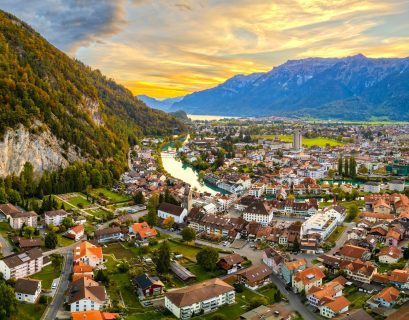In our fast-paced, always-connected world, silent retreats are becoming a powerful antidote for travelers seeking a break from constant stimulation. By setting aside the noise of daily life, silent retreats offer a unique form of travel where the focus shifts inward, allowing participants to reconnect with themselves through stillness, mindfulness, and a deep sense of presence. This guide explores the rise of silent retreats, what to expect, and why they’re a transformative experience for anyone craving tranquility.
The Appeal of Silence in a Noisy World
In recent years, silent retreats have gained traction as a form of wellness travel, providing an opportunity to disconnect from the digital world and find peace within. Unlike traditional vacations, which often focus on external experiences, silent retreats prioritize inner exploration, helping participants to develop a stronger sense of clarity and calm. The structured environment and supportive community allow travelers to break away from daily routines and reflect, meditate, and reset without the constant interruptions of social media, work emails, and other distractions.
For many, the idea of silence is both enticing and intimidating. It requires a willingness to step out of one’s comfort zone and embrace the unfamiliar. Yet, for those who embark on this journey, silent retreats are often described as life-changing, offering profound insights and a renewed perspective on life.
What to Expect on a Silent Retreat
Silent retreats can vary widely, from weekend getaways to longer, more intensive programs that last several weeks. Despite these differences, most retreats share some common elements, designed to foster an environment of calm and introspection:
Guided Meditation and Mindfulness Practices
Many silent retreats offer structured meditation sessions throughout the day, led by experienced teachers. These sessions guide participants through techniques that help cultivate mindfulness, focus, and inner peace. Practices like breath awareness, body scans, and walking meditation encourage participants to slow down and be present.No Talking or Digital Devices
A defining feature of silent retreats is the rule of silence, meaning that participants refrain from speaking for the duration of the retreat. Digital devices are typically prohibited, allowing guests to disconnect from screens and external communications. While this can be challenging initially, many find that the absence of chatter and notifications allows for a much deeper and more restful experience.Simple, Wholesome Meals
Meals on silent retreats are often vegetarian or vegan, focusing on fresh, whole foods that support mental clarity and physical well-being. Mealtimes are typically silent as well, allowing participants to practice mindful eating, savoring each bite without distractions.Nature Immersion
Many silent retreats are located in tranquil natural settings, whether it’s a forest, mountain retreat, or beachside sanctuary. Nature provides a supportive backdrop for reflection and helps deepen participants’ sense of connection to the world around them. Outdoor activities like mindful walking, hiking, and even gardening may be incorporated into the program.Journaling and Reflection
Silent retreats often encourage journaling as a way for participants to express thoughts and insights that arise during meditation and introspection. Writing can be a valuable outlet, allowing participants to process their experiences and keep a record of any personal revelations.
Benefits of Silent Retreats
Though challenging, silent retreats are known for their profound and lasting benefits. Here are some ways in which silent retreats positively impact well-being:
Improved Mental Clarity and Focus
Stepping away from the constant noise of daily life allows the mind to rest and reset. Over time, silence and mindfulness practices improve clarity and focus, making it easier to manage stress and decision-making long after the retreat ends.Reduced Stress and Anxiety
Studies have shown that regular mindfulness and meditation reduce levels of cortisol, the body’s primary stress hormone. Many retreat participants report a deep sense of relaxation, which can have lasting benefits on mental health, alleviating symptoms of stress, anxiety, and even depression.Enhanced Self-Awareness
Silent retreats provide a unique opportunity for introspection and self-discovery. Without the distractions of conversation and technology, participants can observe their thoughts, emotions, and behaviors more objectively, leading to a greater understanding of oneself.Increased Resilience and Patience
Silence requires a certain level of patience and discipline, especially in longer retreats. Learning to sit with one’s thoughts and emotions without immediate distraction builds resilience, emotional stability, and a greater tolerance for discomfort.Improved Relationships
By fostering self-awareness and emotional clarity, silent retreats often lead to improved communication and empathy in relationships. Many participants find that the insights gained during their retreat help them approach relationships with more kindness, understanding, and presence.
Types of Silent Retreats: Finding the Right Fit
Silent retreats come in various formats, catering to different preferences and levels of experience. Here are a few popular types:
Vipassana Retreats
Vipassana, one of the oldest forms of meditation, involves observing sensations in the body as a path to self-awareness. Vipassana retreats typically last 10 days and are quite intensive, with participants engaging in silent meditation for hours each day. These retreats are recommended for those seeking a deeply transformative experience.Mindfulness-Based Silent Retreats
These retreats blend silence with guided mindfulness practices, making them ideal for beginners. Participants practice techniques like mindful breathing, body scans, and walking meditation, creating a foundation for ongoing mindfulness.Yoga and Meditation Retreats
Combining yoga with silence, these retreats offer a balance of physical movement and mindfulness. Many are held in scenic locations and offer a gentler introduction to silence, incorporating activities like yoga, journaling, and guided meditation.Nature-Based Silent Retreats
For nature lovers, retreats held in serene, natural environments allow for a deep connection to the outdoors. These retreats may include mindful nature walks, forest bathing, and outdoor meditation, creating a harmonious blend of silence and natural beauty.
How to Prepare for a Silent Retreat
Preparing for a silent retreat involves both practical and mental preparation. Here are some tips to help you get ready:
Start Practicing Mindfulness at Home: Begin incorporating daily meditation or mindfulness into your routine to familiarize yourself with silence and stillness.
Minimize Distractions Ahead of Time: Try limiting your use of digital devices a few days before the retreat, creating space for relaxation and introspection.
Pack Comfortably: Silent retreats often emphasize comfort and simplicity, so pack loose clothing, any necessary toiletries, and perhaps a journal. Remember that this experience is about letting go of material concerns.
Silent Retreats: A Journey Inward
Silent retreats aren’t just about quiet—they’re about cultivating presence, awareness, and self-compassion. For travelers yearning for more meaningful experiences, a silent retreat offers a rare chance to pause, reflect, and recharge. Whether you’re seeking mental clarity, inner peace, or simply a break from the demands of modern life, silent retreats invite you to embrace stillness as a source of strength.
In an age where true silence is a luxury, silent retreats offer a path to rediscovering a deeper sense of self and an appreciation for the present moment. If you’re ready for a journey inward, a silent retreat might be the most transformative travel experience you’ll ever undertake.
[mc4wp_form id="5878"]






